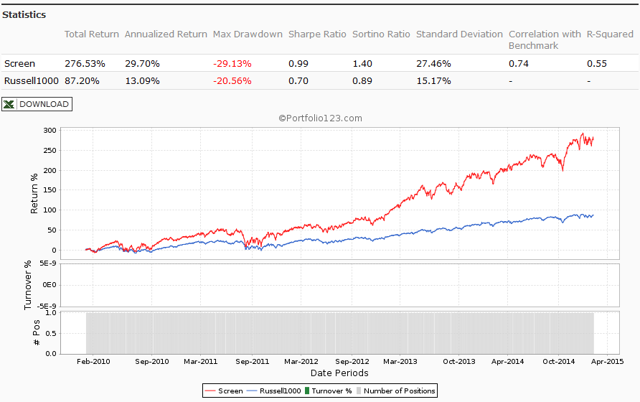Dividend Income Versus Dividend Growth
Post on: 9 Июнь, 2015 No Comment

While the higher yields from high payout ratio stocks are enticing, stocks that offer dividend growth are generally higher quality.
Just because a stock pays a dividend, it doesn’t mean that its growth days are behind it. Apple AAPL. which plans to pay its first dividend later this quarter, is still projected to grow earnings by 22% per year over the next five years. Apple plans to pay a quarterly dividend of about $2.65 per share. That equates to a dividend payout ratio of about 26% of earnings, based on forecasts of $10.33 in per share earnings for the next quarter and a low dividend yield of about 1.9%. The conventional wisdom is that the higher the payout ratio, the lower the future earnings growth.
Let’s say that a firm has $100 in capital and income of $10, for a return on capital of 10%. If it pays out 70% of earnings as a dividend, it would pay a $7 dividend and keep $3 as additional paid in capital. The next year, capital starts out at $103, and if we assume that the firm earns a 10% return on capital again, earnings would grow to $10.30 for 3% earnings growth. The more earnings the firm keeps, the greater the capital base and the faster earnings will grow. For example, if the payout ratio had been only 20%, the capital base would have grown to $108 and the 10% return on capital would result in earnings of $10.80, for 8% earnings growth. Of course, the higher the payout, the higher the current dividend yield is likely to be. Because utilities companies typically have steady capital needs with few growth opportunities, they tend to have high payout ratios and higher dividend yields, while tech firms have historically had low payout ratios as they often have many growth opportunities.
Now or Later?
So which is better: stocks that pay a modest dividend but offer the promise to grow that dividend in the future, or stocks that pay out most of their earnings as dividends with seemingly little potential for growth? There are pros and cons to both approaches. Dividend growth companies are often higher quality with disciplined managers focused on stable dividend growth. The ability to increase dividends through thick and thin suggests a management culture very concerned about protecting and growing dividends. This is a good signal for future growth, as it keeps managers focused on allocating capital wisely. Warren Buffet is widely known as a dividend growth investor. A counterargument is the fact that while growth sounds appealing, that growth is often priced into the value of the stock. Additionally, the current economic environment is characterized as having low growth, so reinvested dividends may not earn high rates of return.
Arguments in favor of a high payout are academic studies showing that higher payout ratios actually predict higher future earnings growth, both at the aggregate stock market level and at the individual company level. Perhaps what is more important than the payout ratio itself is the information signal from management. Managers who are confident in their business prospects and see strong cash flow in the future are more likely to pay out a large dividend.
Whether you prefer stocks with high payouts or stocks with growth potential, the fund structure is an excellent way to invest in dividend-paying stocks because of its potential for low-cost diversification. There are funds available that focus on higher-payout stocks as well as funds that focus on dividend growth. Dividend-themed funds have been a popular choice for fund investors over the past several years, as dividend yields look attractive relative to bond yields.
Within the ETF landscape, perhaps the greatest example of the contrast in style between dividend growth and high current yield is Vanguard Dividend Appreciation ETF VIG with its 2.1% dividend yield and Vanguard High Dividend Yield Index ETF VYM with its 2.9% yield. Stocks in VIG have a price/forward earnings ratio of 14.6 times, a sales growth rate of 9.6%, and a book value growth rate of 8.3%. Stocks in VYM have a price/forward earnings ratio of 13.0 times, a sales growth rate of 6.5%, and a book value growth rate of 4.8%. Clearly, stocks in VIG are growing faster than stocks in VYM, but they are also more expensive, selling at a higher valuation multiple.
VIG is also slightly higher quality, with 59% of assets in stocks with a wide economic moat and a risk, as measured by five-year standard deviation, of 16%. Stocks in VYM are slightly lower in quality, having 53% of assets in wide-moat stocks and a five-year standard deviation of 19%. Stocks with a high payout ratio and a high yield are often distressed. VYM attempts to address this problem by holding a diversified list of 439 stocks compared with 134 stocks in VIG. Over the past five years, VIG has returned 2.89% per year, trouncing the 0.89% return of VYM. Part of the outperformance of VIG can be attributed to its lower allocation to financial stocks through the financial crisis.














